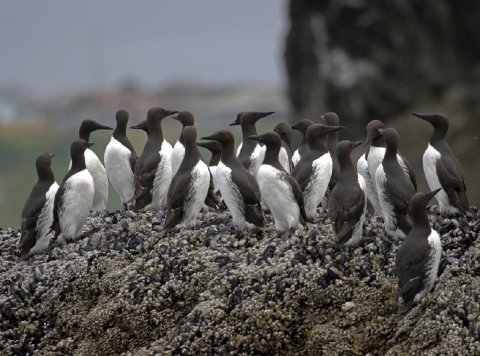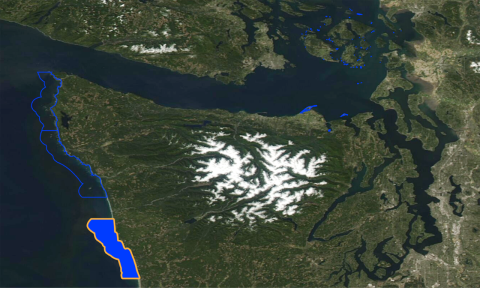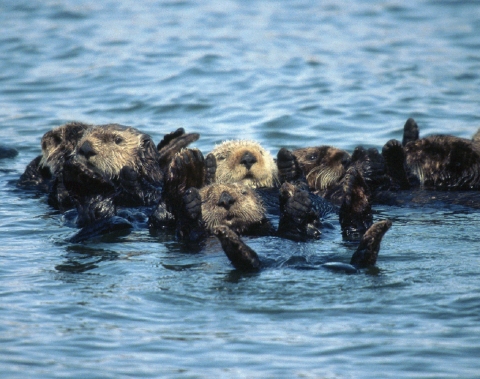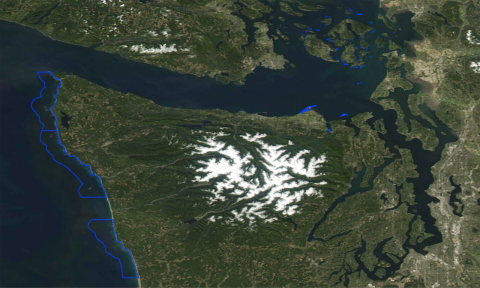About Us
A Home for Migrants
Along with Flattery Rocks and Quillayute Needles, Copalis was set aside by President Theodore Roosevelt in 1907 as one of the earliest National Wildlife Refuges in an effort to protect and enhance habitat for struggling seabird populations. Together these Refuges have been designated wilderness and include approximately 800 off-shore rocks, reefs and islands stretching from Cape Flattery in the north to just south of Copalis Head, excepting those that are part of designated Native American reservations. Today the islands swell with raucous flocks of migrating seabirds including Caspian terns and sooty shearwaters during fall and spring migrations. In summer the vast majority of Washington’s breeding seabirds jostle for space on these remote rocks. Black oystercatchers tend pebbly nests at the water’s edge, common murres lay gravity defying eggs on barren ledges, and tufted puffins burrow their nests deep into the loamy bluffs.
Copalis National Wildlife Refuge
Our Mission
Since 1907, critical resting and breeding grounds for marine wildlife off the outer Olympic coast have been protected and preserved by the National Wildlife Refuge System. The nearly 800 rocks, reefs, and islands known as Flattery Rocks, Copalis, and Quillayute Needles National Wildlife Refuges are designated wilderness (except Destruction Island), and all will continue to be preserved in a natural condition with minimal human intrusion.
Management activities focus on monitoring Refuge wildlife and on protection and maintenance of a natural functioning ecosystem. The U.S. Fish and Wildlife Service coordinates with other agencies and tribes to ensure the long-term health and viability of native seabird and marine wildlife populations. We also work with others to provide wildlife viewing and interpretation at selected locations on the adjacent coastline. Fostering an appreciation for Pacific coast wildlife will enrich people in a variety of ways and ensure that this outstanding legacy of wildlife is passed on to future generations.
The mission of the National Wildlife Refuge System is to administer a national network of lands and waters for the conservation, management and, where appropriate, restoration of the fish, wildlife and plant resources and their habitats within the United States for the benefit of present and future generations of Americans.
Other Facilities in this Complex
- Flattery Rocks NWR
- Quillayute Needles NWR
- San Juan Islands NWR
- Dungeness NWR
- Protection Island NWR











